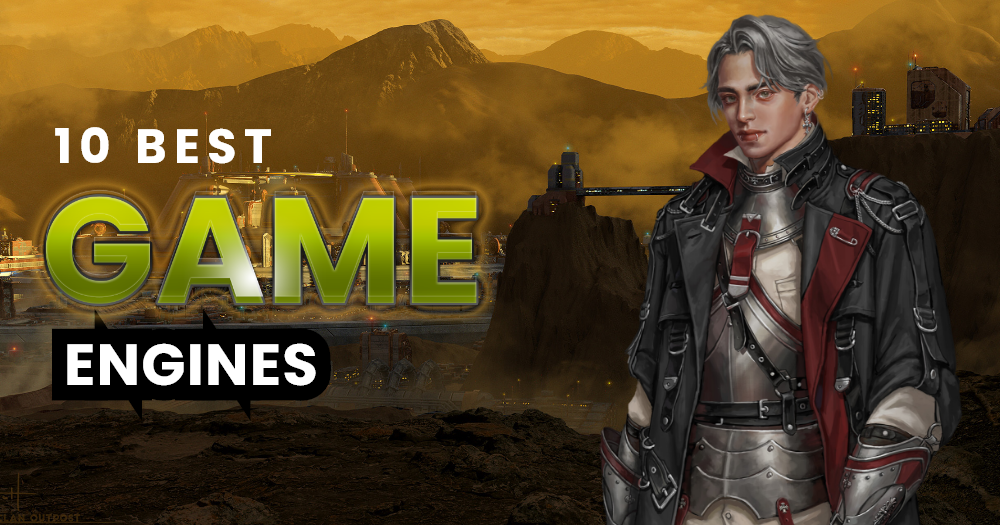The business model of NFT gaming is based on the sale of in-game assets. These digital assets can be used to purchase items or experiences within the game, or they can be sold to other players for a profit. The value of an asset is determined by the market, which means that it can fluctuate based on demand. gaming companies are exploring different ways to integrate NFTs into their games. For example, Axie Infinity allows players to purchase, trade, and breed virtual pets. These pets can be used in battle, and they can also be sold for a profit.
Epic Games, the company behind Fortnite, recently announced that it would be launching an NFT marketplace where players could buy, sell, and trade virtual goods. This move signals a major shift in the gaming industry, and it is likely that other companies will follow suit. The future of NFT gaming is exciting because it offers a new way for gamers to interact with and invest in their favorite games. It also has the potential to create new business models for gaming companies. However, the success of NFT gaming depends on the adoption by players and gaming companies alike. Only time will tell what the future holds for this nascent industry.
What are NFT Games?
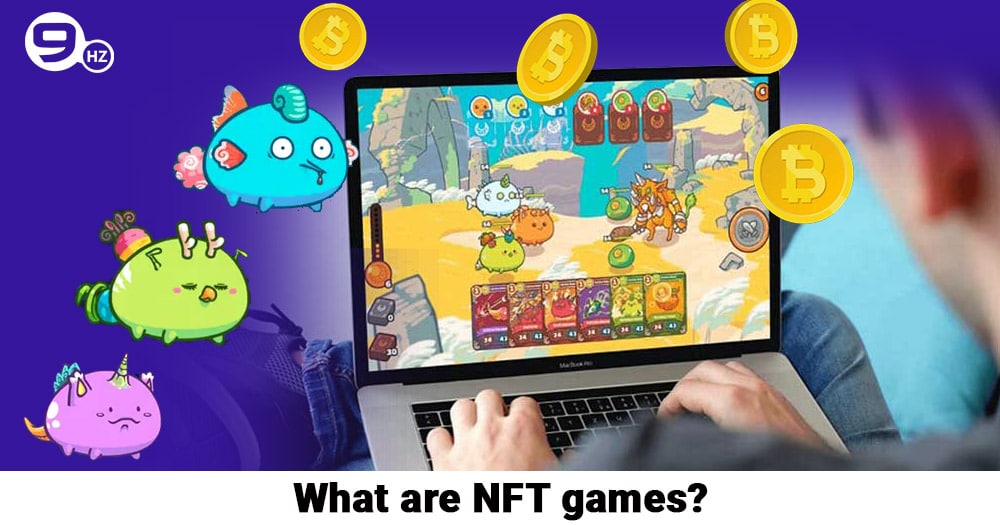
First of all, understand what is NFTs, so a non-fungible token is a unit of data stored on a digital ledger called a blockchain that certifies digital assets. It can represent everything from unique art to music to in-game. Unlike cryptocurrency they are one-of-a-kind.
Now let’s delve into to know what are NFT games and the upcoming NFT game trends. These game mechanics blend classic PlayStation elements with innovative gameplay techniques to give players better control over in-game assets such as skins, characters, weaponry, virtual territories, etc. This is possible by creating blockchain-based games and connecting them to digital asset-powered economies.
Players can claim ownership of game assets in secondary markets in three ways with this framework in place. They can make new characters, buy digital items from native or third-party markets, and earn and unlock new items. You have sole ownership of these game assets, regardless of how you acquired them.
What is an NFT Tokens and How it change Future of Gaming?
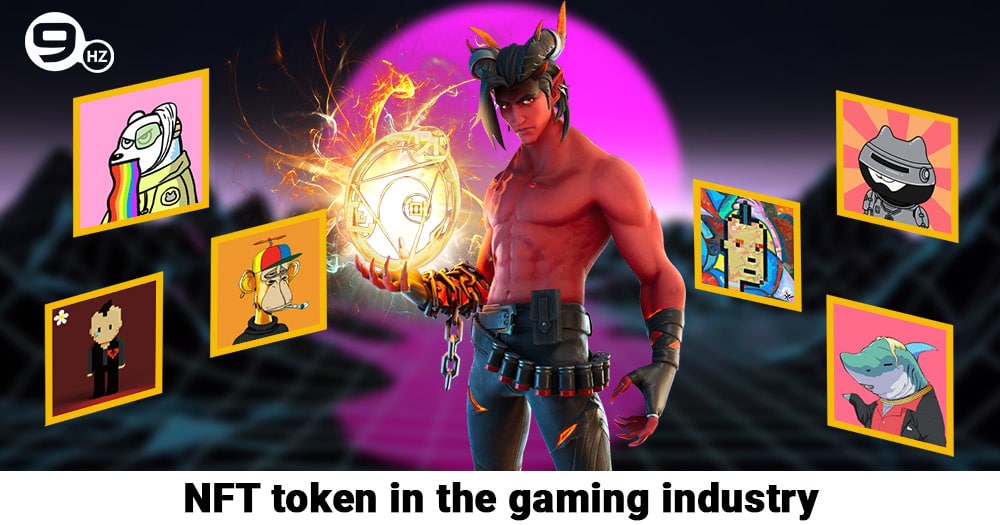
Non fungible tokens (NFT) are a type of cryptocurrency that uses blockchain technology. NFTs are unique, digital assets that can be used to represent items such as art, music, or other collectibles. Unlike traditional cryptocurrencies, which are all interchangeable, each NFT is unique and cannot be replicated. This makes them ideal for use cases where authenticity and provenance are important, such as in the art world.
NFTs have been gaining in popularity in recent years, as they offer a new way to trade and own digital assets. While NFTs are still in the early stages of development, they have the potential to revolutionize the way we interact with the digital world.
One of the most expensive NFT monkey ever sold is The Bored Ape Yacht Club is a collection of unique Bored Ape NFTs.
The world of video gaming is evolving rapidly, and the rise of NFT in gaming is set to change the landscape even further. For game companies, NFTs offer a whole new way to monetize their products andservices. In the past, gamers would purchase a game outright or pay a subscription fee to access it. With NFTs, however, game companies can now sell in-game assets as digital collectibles. This opens up a huge new revenue stream for NFT game development agencies, and it also allows them to tap into the growing player base who are interested in investing in digital assets. For gamers, NFTs offer a unique way to show off their achievements and progress within a game. They also provide an opportunity to earn real money from their hobby by trading and selling collectibles. With the advent of Web 3.0, the gaming industry is set for even more change and growth. NFTs will play an important role in this new era of gaming, and they are sure to have a major impact on the future of the industry.
Future of Gaming Trends: Play to Earn Games (NFT Games)
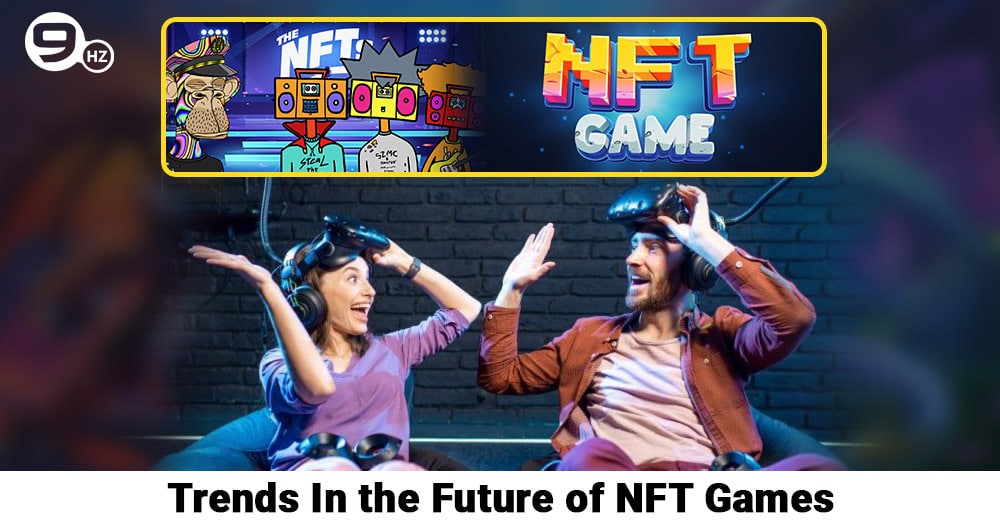
1) Play-to-earn games
The play to earn games business model is growing in popularity as a way to increase the player base of video games. In this model, players are able to earn rewards for playing the game, which can be used to purchase in-game items or trade with other players. This not only provides an incentive for players to keep playing the game, but also allows them to recoup some of their costs. In addition, play to earn games often use blockchain technology, which allows for a more secure and transparent system of rewards. As a result, this business model has the potential to change the landscape of video gaming.
2) Blockchain-based NFT gaming
Like we mentioned earlier, Blockchain technology and NFTs are two hot topics to explore in the gaming industry. Moreover, the future of NFT games resides with Blockchain technology. Blockchain-based NFT gaming gives authority to the players over the assets on the platform to generate more views.
The Blockchain games arise because of their rising features and power given to the player. The upcoming NFT games would be integrated with underlying Blockchain technology.
The future of Nft game gives the opportunity to trade in-game assets of their favorite game.They can make transactions with developed in-game on some another market, allowing them to make money from it.
3) Metagame
Metaverses are a digital world that includes a wide range of methods and components, including financial, communications, games, individual profiles, and more. Its promise can be attributed to the flexibility it offers everyone in the metaverse to create, purchase, and gaze at NFTs in order to build virtual estate, engage in social communities, create virtual identities, and play, among other things.
This diversity of applications opens up a plethora of opportunities to monetize both real-world and digital wallets, which users and businesses can integrate into metaverse frameworks.
NFT gaming metaverse is tremendous and has a potential future. The upcoming NFT games would use Metaverse crypto games for a pleasurable gaming experience. If a game is like an NFT fighting game, the experience would be surreal and has many options in the NFTs market to get real-world revenue.
4) Investment and Creditability
In a variety of exciting ways, the NFT and decentralized finance worlds are beginning to collaborate. There are DeFi apps that allow you to borrow money with the use of collateral. This ensures that the lender is compensated – if the borrower fails to repay the DAI, the collateral is returned to the lender.
However, not everyone has a sufficient amount of cryptocurrency to use for every game.
Developers have the option of creating shares for their NFT. This allows investors and fans to own a piece of an NFT without having to purchase the entire thing.
This expands the possibilities for both minters and collectors. DEXs, not just the NFT marketplace, can exchange fractionalized NFTs. This indicates there will be more buyers and sellers.
The price of an NFT’s fractions may be used to determine its total price. You have a better chance of owning and profiting from the things you care about. It’s more difficult to get priced out of acknowledging NFTs these days.
5) Transforming in-game Marketplaces
What’s noteworthy about NFT-based games built is that they offer an alternative to the current gaming marketplace system, which sees roughly $50 billion spent on NFT marketplaces each year. These are often limited to one game and one user, rendering them basically useless after the user loses interest in the game.
These in-game items will have value on the secondary market and may be transferable to other games if they are converted into NFTs. Because of scarcity, transferability, and proof of ownership, gamers can view in-game assets as investments with the possibility for Nft game future profits, rather than merely a nice addition to normal gameplay.
6) NFT farming
Many NFT-based games allow players to farm new exotic NFTs with tokens. Token users who bet their token, for example, are rewarded with one-of-a-kind cards, sets, or chests. The uniqueness of these objects can be categorized into two broad categories: visual rarity and game-play rarity.
When farmed, the visual value NFTs will comprise items such as a background, a card frame, and others. On the other hand, a game-play rarity-based NFT item seems to be a weapon that may give players an advantage over their opponents.
7) Microtransactions
Microtransactions have become one of the most popular gaming innovation in recent years. Rather than buying a game once and owning it whole, consumers now buy it (or get it for free) and then pay a premium for additional in-game content.
8) Gaming meets social media
Games on Near are also functioning as hybrid social media platforms. In Near Lands, a pixelated land-based open-world game, players can participate as much for the sense of community as the gameplay. While going on adventures through the game’s open world, players can build NFT characters and items.
Reality Chain also explores this concept with its multi-chain, social gaming metaverse, which was recently launched on Octopus Network. Reality Chain allows players to level up their social and gaming lives through a combination of non-immersive, multiplayer 2D and 3D experiences.
Looking For Hire NFT Games Developers
Request A Free Quote
Advantages of Developing NFT Games
NFTs can’t be copied or reproduced anytime. One of the key advantages of such games was NBA Top Game Shot. The NBA deployed a non-fungible token system for fans to immortalize their favorite moment in the form of cards.
Another possible benefit of NFTs is monetization like owning in-game property or essentially, converting digital goods into other digital assets entails assigning a monetary value to them.
By creating digital versions of physical treasures like baseball and NBA cards and presenting them with non-fungible tokens, physical collectibles like baseball and NBA cards have become digital assets that now you can exchange for fiat money. The tokenization of these in-game assets might be used to create play-to-earn video games.
When digital files are converted into non-dispensable digital assets, distribution constraints are imposed. You can never generate money from NFTs while playing the game. Here’s how NFTs will work in your favor.
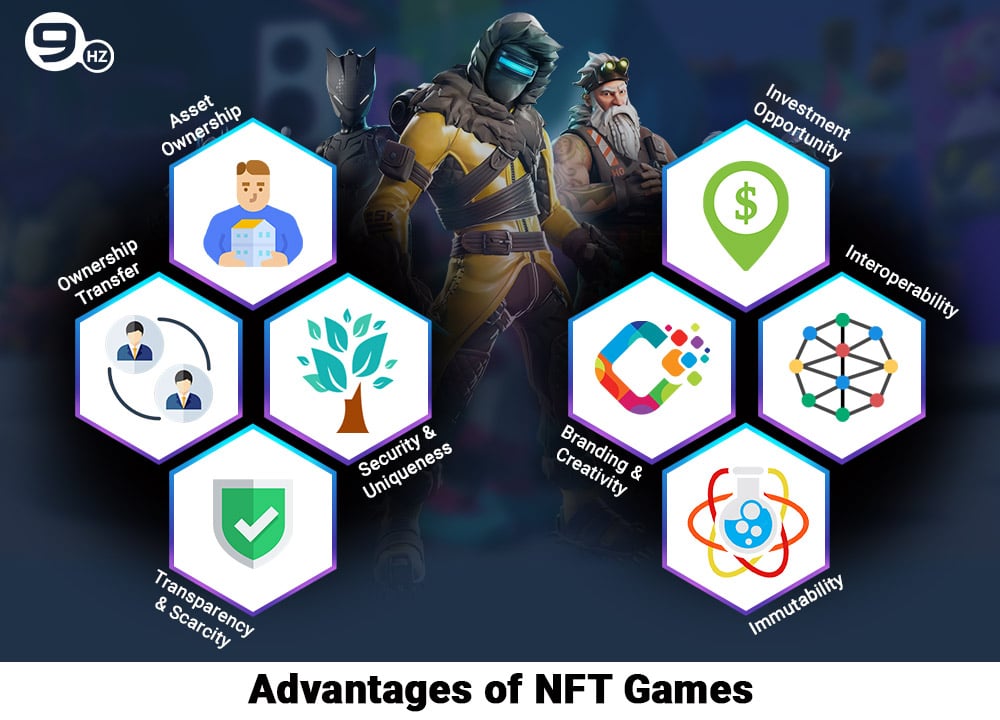
1) In-Game Asset Ownership and Control
NFT game trends give the opportunity to trade in-game assets of their favorite game. It allows the user to own all game treasures and items and have complete control over them in a decentralized system.
This is not the situation in traditional gaming systems, where you can only examine your game assets, regardless of how much you paid for them.
Furthermore, each item can have a unique identifier tied to your account as long as you hold them, and you cannot lose them if the game provider shuts down the game because it is stored in your wallet. This enables customers to keep their assets without worrying about theft safely.
Another significant advantage of NFTs ownership is monetizing assets and trading them on markets in exchange for crypto or fiat.
2) Transfer of Ownership
A player can sell his gaming treasures whenever he wants and obtain a fair price. This makes the buyer the current owner through ownership transfer, and it is updated on the blockchain game.
3) Security and Uniqueness
Assets cannot be reproduced since they are non-fungible, nor can they be possessed fraudulently or lost when a game closes because they are transportable and may be saved in wallets such as Trust wallet and MetaMask.
4) Transparency and Provable Scarcity
Collectors place a premium on uniqueness and authenticity, and the scarcity of in-game NFT purchases is demonstrated by the unchangeable records embedded in an NFT’s underlying blockchain technology. This distributed public ledger confirms each NFT’s number and uniqueness and its own history.
5) Investment Opportunity
It provides a significant investment potential in-game collectibles, whereby, especially scarce objects that others want and need, can increase in value significantly and give the owner a solid Return on Investment (ROI).
6) Branding and Creativity
NFTs can boost brand awareness because they can be presented in multiple NFT markets. They can also be utilized to attract new attention and adoption by incorporating new creative features into designs.
We could go on and on, but for the sake of this post, we’ll let your imagination run wild about what other advantages NFTs can have in gaming.
7) Interoperability
Traditional internet games are available on centralized servers. As a result, in-game assets exist within proprietary systems that are not interoperable with others. On the other hand, decentralized games live on separate blockchains that serve as the backend infrastructure for other interconnected games.
As a result, NFT-based game assets can be built to be interoperable across several environments. For example, two games created on the Ethereum network may share in-game purchases such as cars, armor, or complete characters.
8) Immutability
Users typically lose all their in-game purchases when a traditional online game closes down. NFTs, on the other hand, exist independently of any gaming platform and live on the blockchain itself. As a result, regardless of what happens to the game, in-game purchases can be bought and sold, and new games can be built to fit into an existing blockchain system.
Furthermore, NFTs establish a permanent record upon the issue, blockchain-enabled game assets cannot be replicated or tampered with.
Also Read: How To Develop An NFT Marketplace Platform in 2022
Top NFT Game in 2022
Specific platforms have positioned themselves as the main highlight of the NFT gaming market, as they have in all new and established sectors. Because They have effectively combined NFTs with popular game themes, these games are at the forefront of the current Nft game trends. As a result, users can enjoy their favorite game genres while also participating in a lucrative NFT market.
Without further ado, here are trending games that fit within this category:
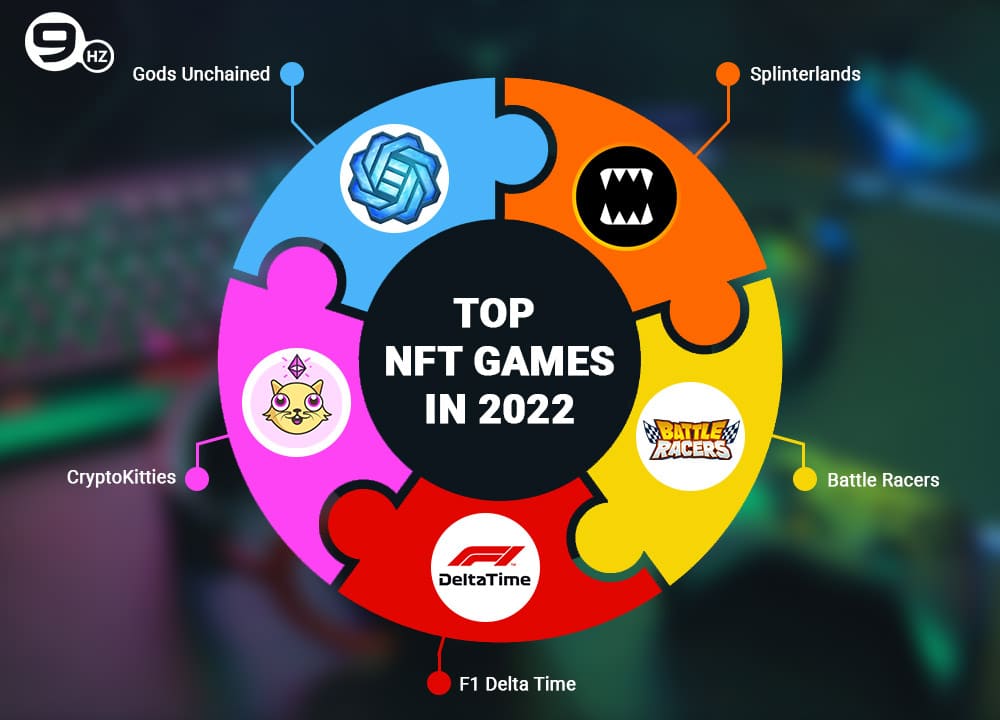
1) Gods Unchained
Gods Unchained is a free-to-play card-trading game that combines NFT elements with a regular card-trading game. Players obtain cards by purchasing them from other players or by winning PVP bouts, typically decided by the quality of the cards and the players’ gaming ability.
For example, more emphasis is being placed on talents and strategies. This is because the game’s ranked game mode pairs players with similar ratings.
2) Splinterlands
Splinterlands, like Gods Unchained, is a tradable card game in which players earn money as they play, and you are awarded when you win card matches. To start playing Splinterlands, you must first buy a starter pack of cards, create a Steem account and expose the purchased cards in the game.
In some cases, you might get lucky and obtain uncommon cards in your first set of purchased cards. You may also run across duplicates of the same type of card. If this is the case, you can combine identical cards to strengthen them or sell one for cryptocurrency.
3) Battle Racers
As the name implies, Battle Racers is influenced by popular games such as Super Mario Kart and F-Zero. The competition aims to combine various weapons, equipment, and machine learning to create the most potent vehicles.
Here players compete to create the ultimate vehicle by prioritizing various skills and traits. To earn more fighting points, you may prefer handling over-speed or defense over weaponry. This game is a cryptocurrency that may be used in Decentraland.
4) F1 Delta Time
Another excellent pick among the next NFT platform would undoubtedly be F1 Delta Time. It is similar to a Formula One game in that it allows users to enter tournaments by utilizing digital collectibles.
Race tracks, vehicles, drivers, tires, and trinkets are among the valuables in the game. It’s also worth noting that the collectibles come in various racing qualities and are only produced in small quantities.
5) CryptoKitties
CryptoKitties is another excellent entry among the crypto gaming industry is play-to-earn alternatives with a touch of fun. It is an Ethereum-based game with a straightforward scenario. As a gamer, all you have to do is gather and breed cats on digital networks.
Aside from the usual responsibilities of collecting and breeding virtual cats, you’ll also find adventures with rewards like establishing collections and solving riddles.
Final Words
NFT games are the future of the gaming industry and are gaining massive popularity in several countries. The future of NFT games is pretty promising because of the rewards they offer. However, finding the best
Great Together!
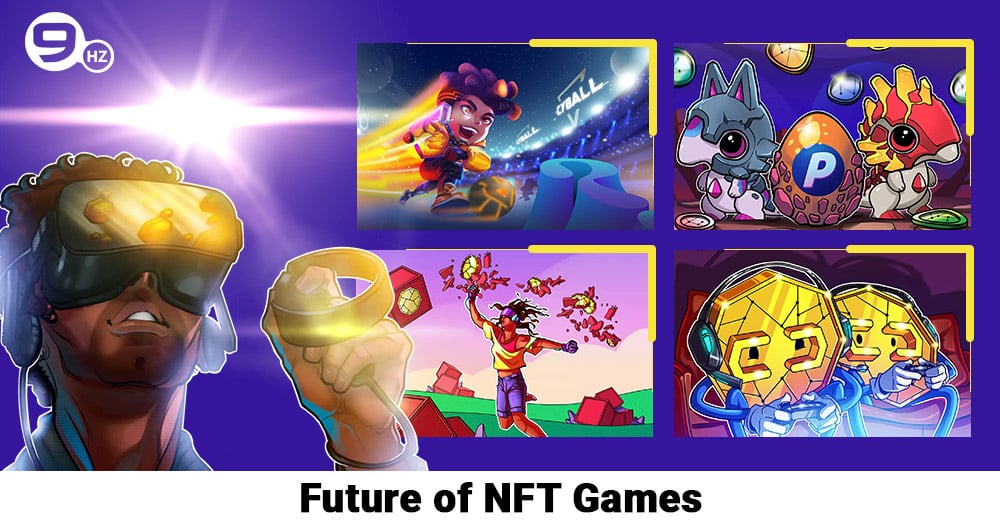
![How to Make AR Game App Like Pokemon Go? [2025 Guide]](https://theninehertz.com/wp-content/uploads/2022/01/AR-Game-App-Like-Pokemon-Go.jpg)
![How to Develop Game App Like Candy Crush [2025 Guide]](https://theninehertz.com/wp-content/uploads/2021/08/Mobile-Game-App-Development-Like-Candy-Crush-1.jpg)
